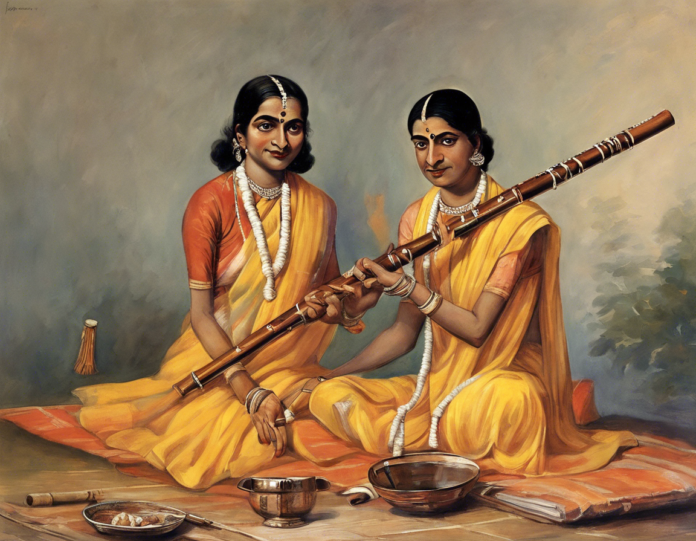Introduction
The Bansuri Swaraj, a traditional Indian bamboo flute, has a rich history steeped in culture and artistry. Its melodies have transcended time and space, captivating audiences across the globe. Let’s delve into the origins, significance, development, and contemporary relevance of this timeless musical instrument.
Origins of Bansuri Swaraj
The Bansuri Swaraj traces its origins back to ancient India, where it was known as Venu. The Vedic scriptures refer to the flute as an instrument closely associated with Lord Krishna, the divine cowherd. Its hauntingly melodious notes were believed to mesmerize the hearts of listeners, both human and animal.
Significance in Indian Classical Music
In the realm of Indian classical music, the Bansuri Swaraj holds a special place. It is classified as an aerophone, producing sound through the vibration of air. The instrument’s cylindrical shape and six or seven finger holes allow for a wide range of notes to be played, making it versatile and dynamic in its musical expression.
Development and Evolution
Over the centuries, the Bansuri Swaraj has undergone significant development and transformation. From its humble beginnings as a hollow bamboo reed to its present-day avatar as a finely crafted musical instrument, the Bansuri has evolved in terms of materials, construction techniques, and playing styles.
Materials: Traditionally, Bansuris were made from bamboo sourced from specific regions known for high-quality wood. Today, flutemakers use a variety of materials such as bamboo, wood, and even synthetic materials to cater to the diverse needs of musicians.
Construction Techniques: The art of crafting a Bansuri is a meticulous process that involves shaping, hollowing, and tuning the flute. Different keys and tunings are achieved by varying the length and diameter of the instrument, resulting in a range of pitches and tonal qualities.
Playing Styles: The Bansuri Swaraj is played using a combination of fingerings and breath control. Techniques such as meend (gliding between notes), gamak (ornamentation), and krintan (trills) are used to embellish melodies and add depth to the music.
Contemporary Relevance
In the modern era, the Bansuri Swaraj continues to captivate audiences with its soul-stirring melodies. It has found its way into diverse genres of music, including fusion, jazz, and world music, showcasing its adaptability and versatility. Renowned musicians like Pandit Hariprasad Chaurasia and Ronu Majumdar have elevated the Bansuri to international acclaim, spreading its enchanting tunes far and wide.
Health Benefits of Playing the Bansuri
Apart from its musical prowess, playing the Bansuri Swaraj offers a range of health benefits. The deep breathing required to produce notes on the flute promotes lung capacity and improves respiratory health. The meditative quality of playing also aids in reducing stress and enhancing mindfulness, making it a therapeutic practice for both body and mind.
FAQs:
Q1: What is the traditional significance of the Bansuri in Indian mythology?
A1: The Bansuri holds a sacred place in Indian mythology, particularly in the tales of Lord Krishna, who is often depicted playing the flute to enchant his devotees.
Q2: Can anyone learn to play the Bansuri Swaraj?
A2: While mastering the Bansuri requires dedication and practice, individuals of all ages and backgrounds can learn to play the flute with the guidance of a skilled instructor.
Q3: What are the key differences between a Bansuri Swaraj and Western classical flutes?
A3: The Bansuri is a bamboo flute with open holes and a cylindrical bore, while Western flutes are often made of metal with closed keys and a conical bore, resulting in distinct tonal qualities.
Q4: How long does it take to become proficient in playing the Bansuri?
A4: The duration to become proficient in playing the Bansuri varies depending on individual practice, dedication, and aptitude. Consistent practice and guidance from a teacher can expedite the learning process.
Q5: Can the Bansuri Swaraj be played in different musical scales?
A5: Yes, Bansuris are available in various keys and tunings, allowing musicians to play in different musical scales and adapt to different styles of music.
Conclusion
The Bansuri Swaraj stands as a testament to the enduring legacy of Indian musical traditions. Its melodic charm and cultural significance continue to resonate with audiences worldwide, transcending geographical boundaries and time itself. As we continue to delve into the world of music, let us cherish the timeless beauty of the Bansuri Swaraj and the artistry it embodies.





